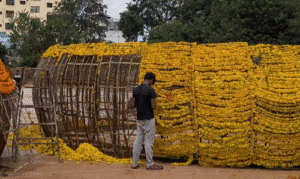The discovery of an artifact (No. 4189) containing 6.04% zinc at the Harappan site of Lothal (Gujarat) provides compelling evidence that the Indus Valley Civilization (IVC) had knowledge of zinc metallurgy. Since zinc has a high boiling point (907°C) and requires temperatures above 1,000°C for extraction, this find suggests the Harappans were capable of generating and controlling such high temperatures.
- Advanced Metallurgical Knowledge
The ability to work with zinc alloys suggests that Harappans were proficient in high-temperature smelting and refining techniques.
Zinc was likely used in bronze-making, as bronze (an alloy of copper and tin) often contained small amounts of zinc to improve hardness.
- Early Use of Zinc
Pure zinc extraction is challenging because it volatilizes at high temperatures, making early zinc metallurgy difficult.
The presence of zinc in an artifact suggests either accidental inclusion in copper alloys or an early attempt at deliberate zinc use.
- Implications for Zinc Extraction in Ancient India
India is known for some of the world’s earliest confirmed zinc smelting sites, particularly at Zawar (Rajasthan), dating back to 9th–12th century CE.
The Lothal artifact suggests that zinc-rich ores may have been used in bronze-making as early as 2200 BCE.
The Harappans mastered high-temperature metallurgy, evident in their copper smelting kilns and use of alloys.
This discovery supports the idea that zinc was known to ancient Indian metalworkers much earlier than previously thought.
The Lothal artifact (No. 4189) provides strong evidence of early zinc use and reinforces the advanced metallurgical expertise of the Harappan civilization.







